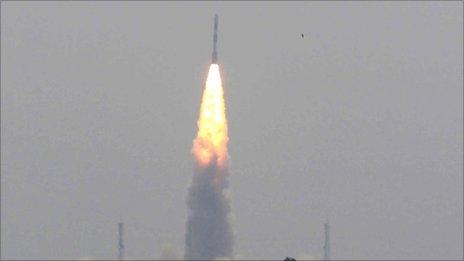Five UK satellites go into orbit on Indian rocket
- Published
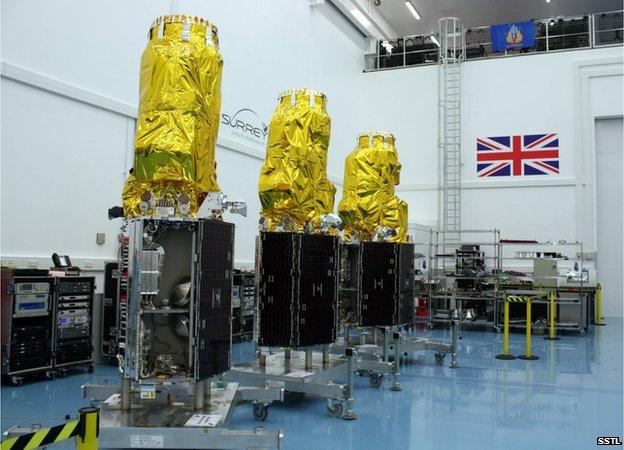
The DMC-3 satellites see features on the ground down to a metre across
An Indian rocket has put five UK satellites in orbit.
It is thought to be the largest number of wholly British-built spacecraft to go up on a single launch.
The quintet includes three satellites to image the Earth and support disaster monitoring and relief, and two to test technologies that could be used on future spacecraft.
The Indian space agency's PSLV rocket lifted off from Sriharikota at 21:58 local time (17:28 BST).
It was the vehicle's heaviest commercial load to date - a total of 1,440kg.
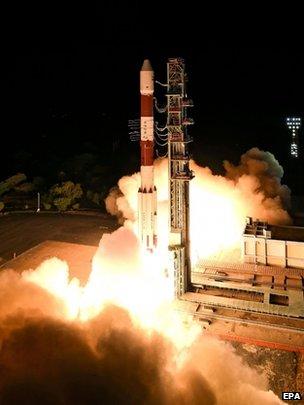
This was the heaviest commercial mission undertaken by the PSLV so far
The trio of imaging spacecraft - known as DMC-3 - were built by Surrey Satellite Technology Ltd (SSTL) in Guildford and will be in the sole operational control of its subsidiary, DMCii.
Each platform weighs 447kg and sees the Earth in a range of visible and infrared wavelengths.
The resolution achieved by the optics surpasses that on any of Surrey Satellite's previous spacecraft, tracking features down to just a metre across.
The capacity on the DMC-3 satellites has been leased to a company from China - 21st Century Aerospace Technology Ltd (21AT) - to help them survey the fast-growing Asian nation.
This is a different business model to the one SSTL and DMCii have traditionally used.
In the past, imaging data has been sold by the square kilometre. Merely leasing spacecraft time is something that is done in the telecoms sector.
"Most folk don't buy a whole telecommunications satellite; they buy transponder time by the hour," explained SSTL chairman Sir Martin Sweeting.
"That's what the BBC does, for example, for some of their live broadcasts: they just use the telecoms satellite for a couple of hours and then walk away.
"And we thought: why don't we apply that to Earth observation.
"We will launch the satellites and run the service, and then customers can come in, lease the imaging capacity and do all the value-added they want on top of that."
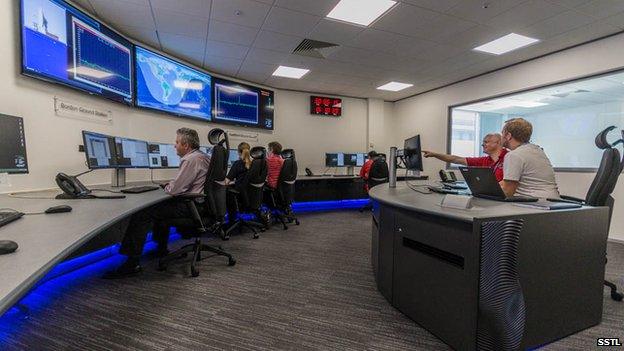
The imaging satellites will be controlled from the UK
It turns out, however, that 21AT has such a high demand for pictures over China and internationally that it is taking all of the capacity on the three spacecraft. A commitment that is good for the next seven years.
Based in Beijing, the commercial geo-information company uses satellite images for urban planning, working out crop yields, pollution monitoring and doing biodiversity assessments, among many other applications.
"We've worked with them for 16 years, even building and launching a satellite for them in 2005 called Beijing-1," said Sir Martin.
That satellite did infrastructure planning ahead of the 2008 Olympics, but also delivered vital disaster-relief maps in the aftermath of the devastating Wenchuan earthquake in the same year.
"You can do all sorts of things with these satellites," Sir Martin added.
"21AT has just been looking at where people have been dumping rubbish in China's cities to make sure it is cleaned up."
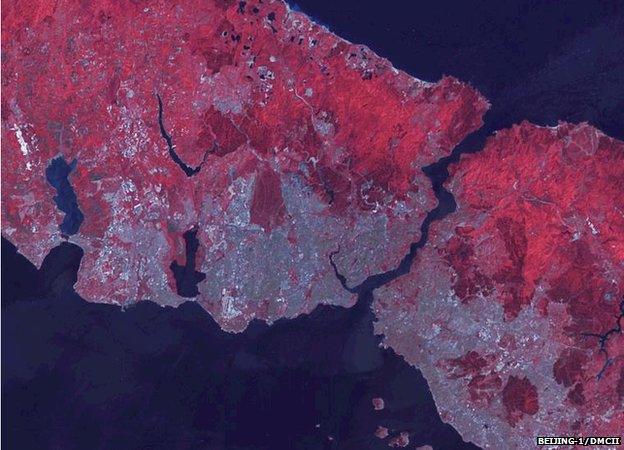
The Beijing-1 satellite images Istanbul and the Bosphorus strait
The British government was instrumental in facilitating the £110m deal that led to the construction of the satellites. That contract was signed during the Chinese premier's visit to the UK in 2011.
The two other spacecraft on Friday's rocket were much smaller.
An 80kg platform known as CBNT-1 was also built by SSTL and will test technologies, such as avionics, that might be used on future satellites.
There was also a 3kg cubesat on the rocket that was developed at the Surrey Space Centre, which is part of the University of Surrey.
This cubesat will deploy a large membrane to demonstrate how redundant spacecraft can be dragged out of orbit much faster than would ordinarily be the case and thus reduce the risk of generating space debris.
Jonathan.Amos-INTERNET@bbc.co.uk, external and follow me on Twitter: @BBCAmos, external
- Published5 November 2013
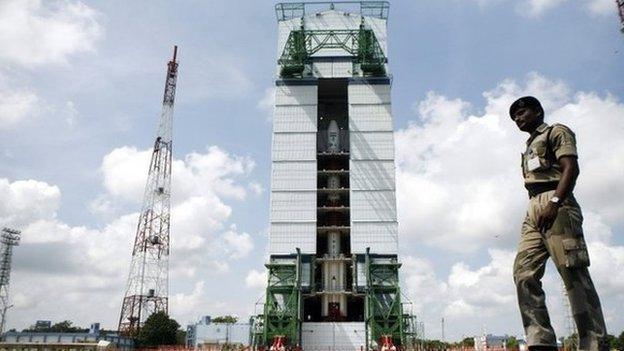
- Published20 April 2011
